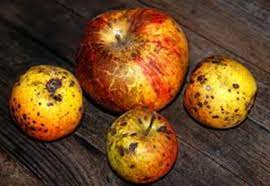In 1850, 60% of the working population in the US was engaged in agriculture. By the year 1950 it was 4%. Today it is 2%. From a peak of 7 million farms in 1935, there are now less than one-third or 2 million left.
In many urban areas, the situation is starker where family farms are becoming largely extinct. For example, Rockland Country, New York (1/2 hour from New York City) had 600 family farms in 1929. Exactly seventy years later only 6 remained.
Similar declines have occurred throughout the US and abroad. Of the one-third remaining US farms, 100,000 or 5% produce most of our foods. The trend is for fewer farmers to produce most food using GM crops that pose risk to human health.
GM seeds sell at a premium, unless purchased in large quantities, which creates a financial burden for small farmers. This problem is however, more of developed nations’ crisis than those of developing nations.
At the present rate of proliferation of GM foods, within 50-100 years, the majority of organic foods may no longer be organic. There is always the risk of genetic contamination in GM foods.
For instance, a Texas organic corn chip maker, Terra Prima, suffered a substantial economic loss when their corn chips were contaminated with GM corn and had to be destroyed.
Organic farmers have long used “Bt” (a naturally- occurring pesticidal bacterium, Bacillus thuringiensis) as an invaluable farming aide. It is administered at only certain times, and then sparingly, in a diluted form.
This harms only the target insects that bite the plant. Also in that diluted form, it quickly degrades in the soil. By contrast, genetically-engineered Bt corn, potatoes and cotton – together making up roughly a third of US GM crops – all exude this natural pesticide.
It is present in every single cell, and pervasively impacts entire fields over the entire life span of crops. This probably increases Bt use at least a million fold in US agriculture.
According to a study conducted at NYU, BT residues remained in the soil for as much as 243 days.
As an overall result, agricultural biologists predict this will lead to the destruction of one of organic farming’s most important tools. It will make it essentially useless. One of the most misleading hopes raised by GM technology firms is that they will solve the world’s hunger.
This has not happened and small holder farming systems engaged in multi seed farming are being destroyed at the expense of large-scale, monocrop commercial production of industrialized nations.

With loss of biological diversity there is an inevitable development of fragility of agriculture. This has given rise to lower yields and more than anticipated use of pesticides.
In summary, biotechnology is used to minimize waste generation at source and to manage waste more effectively and efficiently. It also leads to more food productivity leading to food security and higher quality of life.
There are also established biotechnology techniques for better diagnosis and treatment of chronic and debilitating animal and human diseases. This in the long term means better healthcare delivery and longer life expectancy.
In spite of these advantages, biotechnology raises many concerns that are yet to be addressed. Some of the gains of biotechnology are still too recent for their overall long-term effect to be fully understood.
Consequently, many hold the opinion that the various supposedly benefits of biotechnology must be held with a lot of caution until their implications are fully understood.
This view is substantiated by recent speculations that some of the gains are actually not benefits on the long term. Critics of biotechnology argued that all the optimism about the new technology is unfounded.
They suggest that contrary to expectations, biotechnology will worsen environmental conditions, lower life expectancy and make people poorer. Some convincing arguments were actually offered to support this position.
For instance, they point to the fact that genetic modification to make crops herbicide and pesticide resistant will in reality lead to the application of more herbicides and pesticides because more crops and pests will over time become resistant to those herbicides and pesticides, thus requiring more for unit control.
They also argue that the alteration of the natural balance through genetic engineering may have unimaginable consequences for the future.
Read Also : Disadvantages of Biotechnology the Environment
For instance, some opinions has been expressed to the effect that herbicide and pesticide resistance, expected to make crops resist weeds and pest effects, actually increase their immunity to these herbicides and pesticides.
As a result, more chemicals will actually be required per hectare to control weeds and pest in farms where such crops were planted.
All these conflicting opinions on the merits and demerits of biotechnology raise a big question on whether biotechnology should be continued or discontinued.

